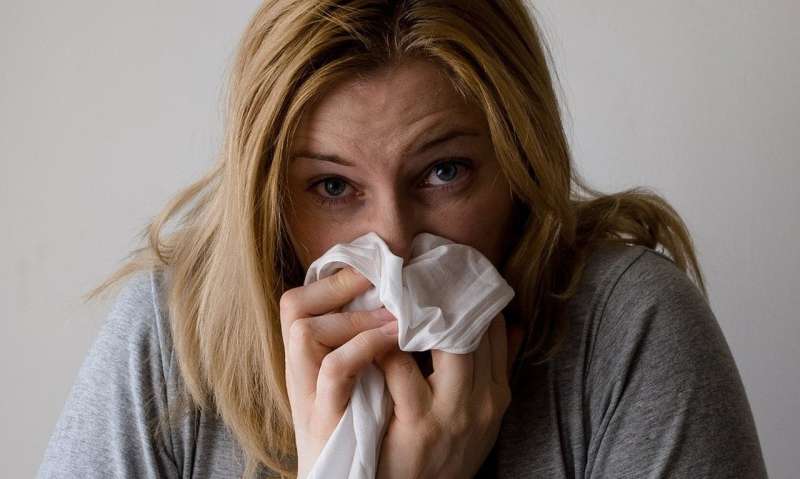Studying cellular fats reveals how to protect cells from the common cold

As temperatures drop and the sniffles start, take hope; research published this summer suggests a new approach to protect ourselves from the common cold. By analysing changes to the make-up and types of cellular fat molecules in cells as they are infected by the cold virus, the research identified three chemicals that point to those that could be developed into a new type of anti-cold drug that could actually stop the infection in its tracks.
The Babraham Institute research, led by Professor Michael Wakelam, Director of the Institute, used a technique called lipidomics to examine the many different fat molecules, called lipids, which are found in all cells. By partnering with scientists at the National Heart and Lung Institute at Imperial College London, the researchers identified close to 500 (493) changes to the lipids within human cells as they are being infected by the cold virus. The team have used these insights to select inhibitors that can prevent key changes to the lipid makeup of cells. This reduced virus replication and therefore limited further infection by the cold virus.
Colds are caused by viruses which need to enter our cells and hijack their biological systems. The hijacked cells make more viruses and eventually die releasing the viruses to infect other cells and spread between people. Cold viruses typically attack cells in the nose, throat and lungs and our body's response to this is what causes all the classic cold symptoms.
This current research focuses on a virus called rhinovirus, the most common cause of colds (30-80 percent of cases). There are around 160 different rhinoviruses that cause colds in humans, this study focuses on one, called RV-A1b, but the team believe that the same approach could easily be applied to other viruses too. Statistics on cold infections are hard to come by, but an adult typically gets between four and six colds per year. In total these viruses account for around 4 in 10 sick days from work.
Fat molecules (lipids) are essential components of all cells with as many as 20,000 distinct fat molecules in our cells. One of their most important uses is to form the outer membrane of each cell as well as the membranes that encase different parts of cells. Certain lipids also play an important role in how cells organise themselves and respond to their surroundings through lipid-based signalling systems. As such, lipids are a complex and varied part of cells but their significance in health and disease has often been overlooked.
In cells, proteins behave like molecular machines, carrying out specific tasks and driving change in the cell. Lipids have mainly been thought of having a structural role, so their importance in diseases has often been overlooked. The molecular differences between lipids and proteins also mean it is harder to study the lipids in a cell that the genes or the proteins. The required lipidomics techniques have only been developed relatively recently so it is now becoming possible to examine lipids to assist in understanding ageing, health and disease. The hope is that lipid analysis may provide new insights into the treatment of a range of previously untreatable diseases, including the common cold.
The paper's first author, An Nguyen, a member of the Signalling research programme at the Babraham Institute, said: "Our results show an unexpected and remarkable complexity of lipid changes in response to rhinovirus infection. We found changes in both the types of lipids found in cells as well as in the length and structure of the fatty acid chains that are a critical part of all lipid molecules. These discoveries have helped us to identify key pathways that represent potential anti-viral drug targets and have demonstrated the potential of lipidomics as a means to discover new treatments."
The study's senior scientist, Professor Michael Wakelam, said: "We've seen fantastic progress in the study of genes and proteins over recent decades and this has had some major impacts on our understanding of human biology, health and ageing. Yet, lipids represent a phenomenally complex and important component of cells that we are still only beginning to understand. There are many more discoveries to be made with the help of lipidomics and it has great potential to change what we know about our own cells."
More information: An Nguyen et al. Host lipidome analysis during rhinovirus replication in HBECs identifies potential therapeutic targets, Journal of Lipid Research (2018). DOI: 10.1194/jlr.M085910

















